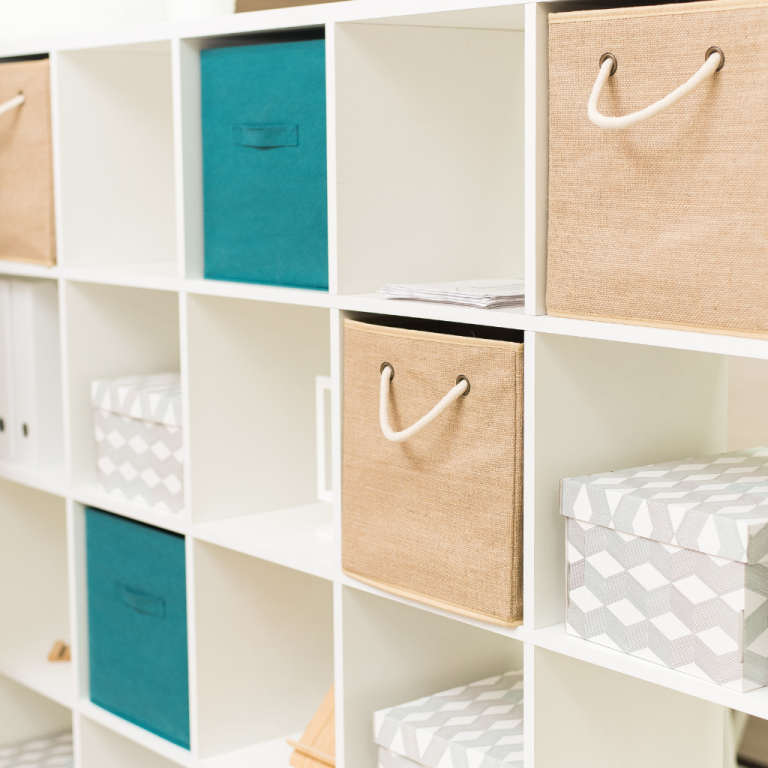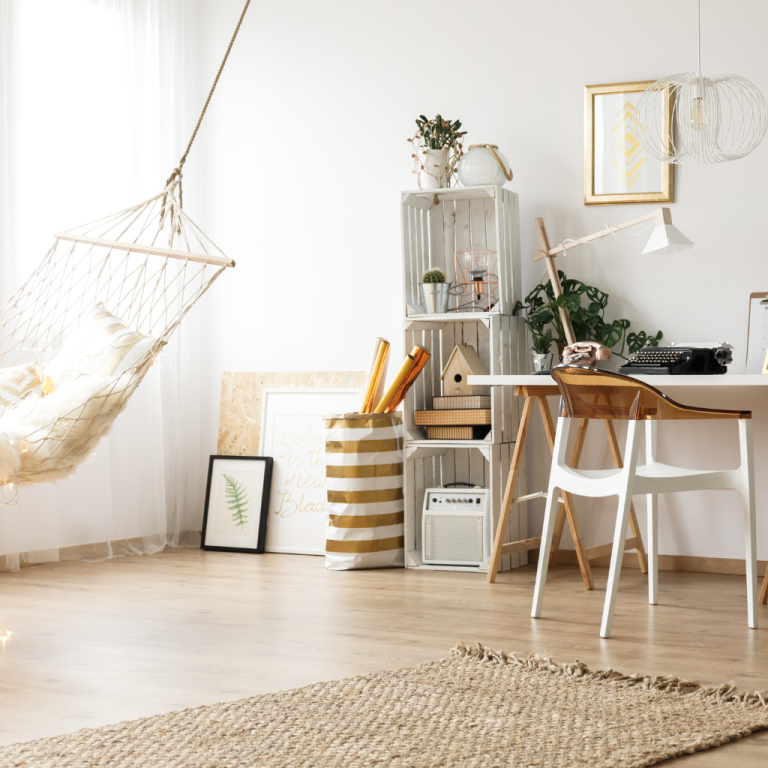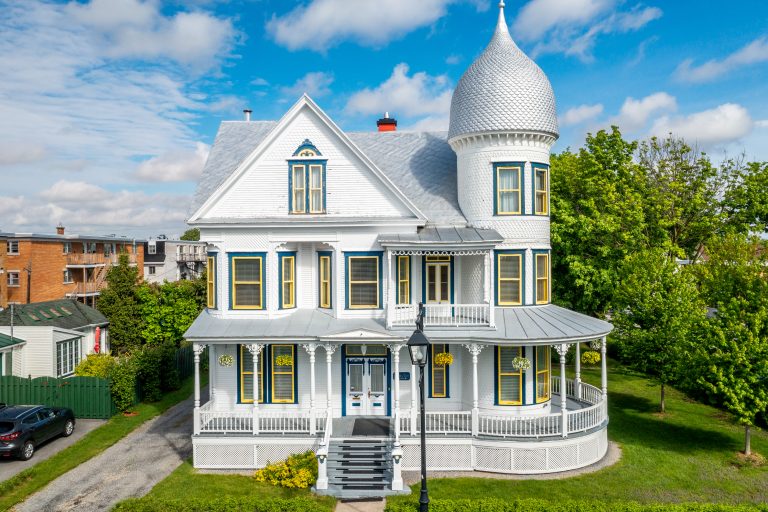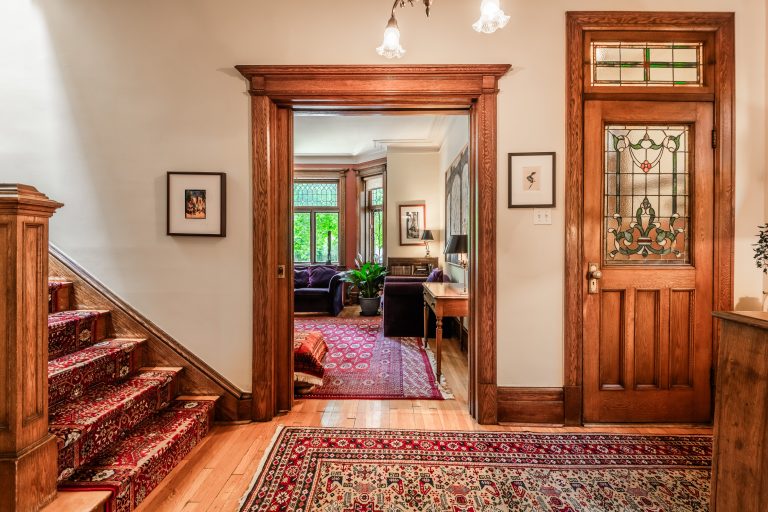A well-designed home office can significantly impact productivity, nurture creativity, and promote your teen’s well-being. By tailoring this space to their personality, you can create an environment that reflects who they are and supports their academic success.
With the start of the school year, explore our tips in this article for designing a space that is both practical and inspiring.

Creating a focus-friendly environment
Finding the right spot
The first step in setting up a study area is choosing the ideal location, considering your teen’s preferences. Some might prefer a quiet, secluded corner, while others feel more comfortable near a window or in the midst of family activity.
To minimize distractions and enhance concentration, we suggest setting up a designated study zone separate from other household activities. A calm spot, away from noise and frequent foot traffic, can make a world of difference.
Optimizing lighting
Good lighting is crucial for concentration, so it’s important to choose a bright spot for your teen’s study area. Ideally, this space should be filled with natural light.
Studies show that natural light not only reduces eye strain but also boosts mood and motivation. Plus, if the study space offers a view of the outdoors, whether it’s the garden or the neighborhood, it adds a calming touch, making the environment even more pleasant.

Enhancing with artificial light
If natural light is limited, artificial lighting can be a great alternative. A desk lamp with adjustable brightness is particularly useful, allowing your teen to tailor the light to their needs, whether they’re reading, writing, or working on a screen.
Choosing the right furniture: Beyond just decoration
Balancing comfort and style
Everyone has their own preferences for where they feel most comfortable working, whether it’s at the kitchen counter or elsewhere in the house. For your teen’s comfort, it’s important to strike a balance between ergonomics and aesthetics while staying within your budget.
Experts recommend a desk at the right height and a chair with good lumbar support to ensure proper posture and prevent back pain from poor seating. Fortunately, there are many furniture styles that fit seamlessly into your home while meeting your teen’s ergonomic needs.
Investing in adaptable furniture
As your teen’s needs evolve, it’s a good idea to choose flexible, modular furniture to ensure their study space remains practical and functional over time.
For example, a height-adjustable desk is a great option, allowing your teen to switch between sitting and standing as they work. Additionally, modular shelving and adjustable storage solutions make it easy to reorganize the space to fit future needs or school projects.

Keeping things organized
A well-organized workspace not only keeps the area tidy but also reduces visual distractions that might disrupt your teen’s focus.
To achieve this, consider incorporating storage solutions that are both functional and stylish. Wall shelves can hold books, school supplies, or decorative items, freeing up desk space. Similarly, sleek file organizers or built-in drawers offer discreet yet practical storage options, promoting an organized study environment.
Personalizing the space to boost motivation
Adding a personal touch
Your teen’s study space should reflect their personality, not just be functional. Encourage them to add decorative elements that resonate with them. Whether it’s photos of cherished moments with family and friends, keepsakes, or posters with inspirational quotes and images, each detail helps create a space that feels uniquely theirs.

Creating a relaxation area
It’s important for your teen to have a space to unwind, especially after long study sessions. Regular breaks are essential for avoiding mental fatigue and burnout.
To create a relaxation zone, consider placing a cozy chair or beanbag near their desk. This little haven will offer a place to disconnect, relieve stress, and recharge before diving back into their work.

Bringing in nature
Incorporating plants into a study space can have a positive impact on well-being.
Research shows that indoor plants absorb pollutants, release oxygen, and purify the air, which helps reduce headaches, eye strain, and stress.
Why not make setting up the study space a joint effort by choosing plants together? It’s a fun activity to share and a great way to help your teen personalize their space.
A study space designed for your teen’s success
Creating a customized workspace for your teen means supporting them in their academic journey while ensuring their well-being, so they can approach their studies with confidence.
In this article, we’ve shared tips on selecting the ideal location, choosing the right furniture, and incorporating personalized elements to make this space a place where your teen can thrive and achieve their academic goals.



